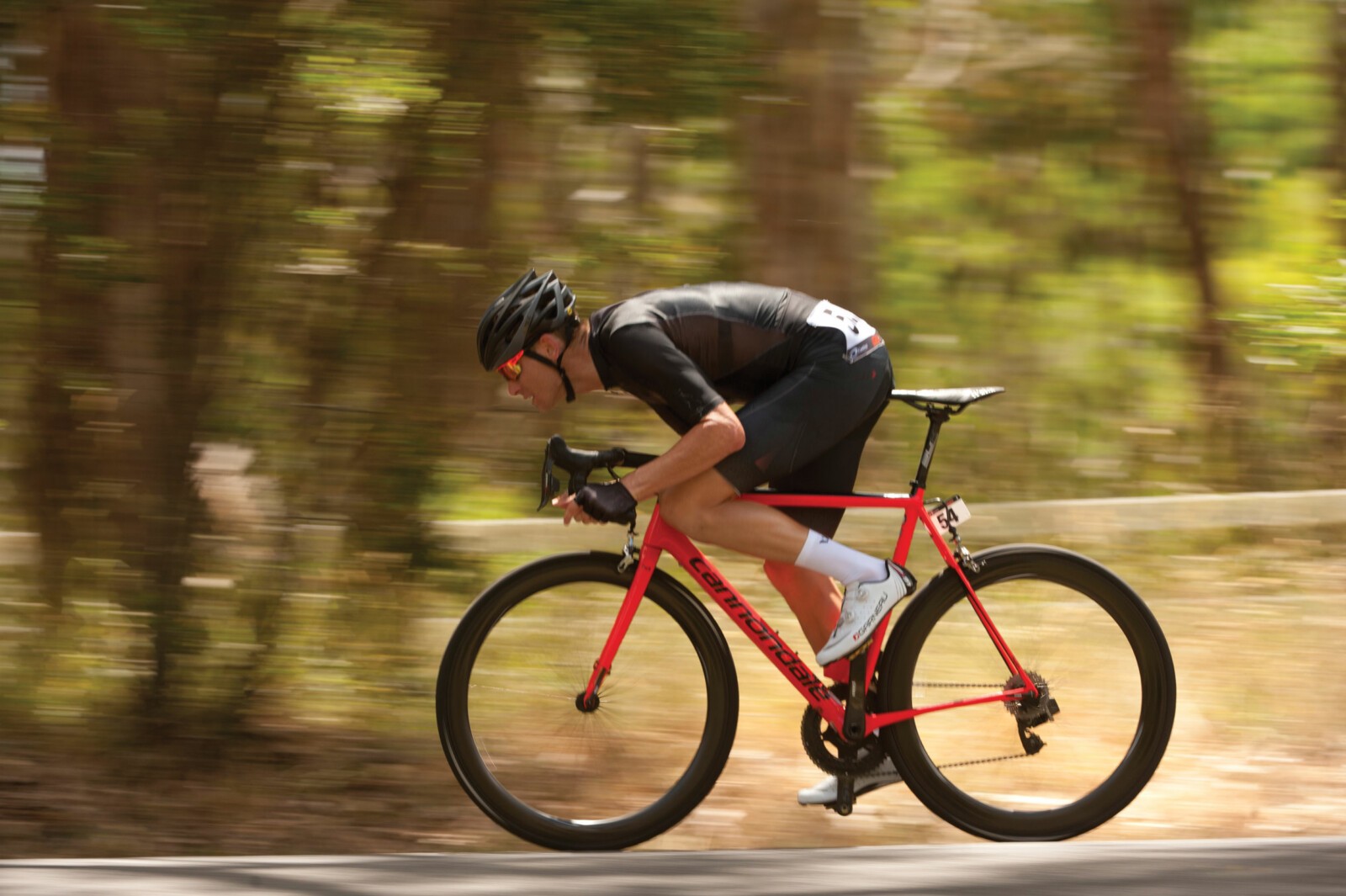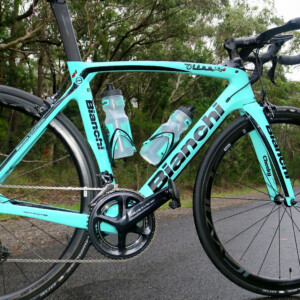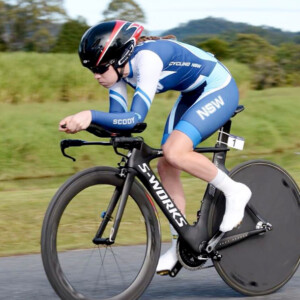Measuring your performance.
There is a saying that goes something like “if you can’t measure it you can’t improve it.” If you’re a competitive cyclist, you’ll probably be looking for ways to improve. Strava is a simple but powerful tool that helps you track your personal records on your ride segments.
But, one of the main issues with the Strava segments is that they don’t consider the external environmental factors; a massive tailwind, or if you sit on the back of a fast-moving bunch. These external factors affect flat segments more than they do hill segments. So, if you want to set a benchmark segment in Strava, it’s best to use a local hill climb.
Training with power removes the influence of the external environmental factors and gives you a more accurate and detailed way of measuring your performance improvement. Even though power meters can be influenced by temperature and may need to be recalibrated frequently they are by far the most accurate way to measure your cycling performance.
Key power data metrics to measure and track
While Training Stress Score, Chronic Training Load, Acute Training Load, Training Stress Balance and Intensity Factor provide a measure of training load, mean maximal power, peak maximal power and watts per kilogram measurements provide insight into the performance improvements of my athletes.
Here are the basic metrics to monitor:
Mean maximal power: is the measurement of how much average power an athlete can produce over a given period. While FTP is the measurement of an athlete’s mean maximal power over 60 minutes, there is a great insight into performance gains that can be made from measuring and tracking the athlete’s mean maximal power figures for one, two, five, 10 and 20 minutes as well.
Peak maximal power: is the measurement of the maximal power number that an athlete can produce instantaneously. It’s a good indicator of how good a sprinter they are. When I’m working with my athletes to improve their sprint, I’m watching their peak maximal power and five and 30 second mean maximal power figures.
Watts per kilogram (W/kg): is worked out from the athlete’s FTP and is an indicator of how well they climb. It’s calculated by dividing their FTP number by their weight in kilograms. The bigger the number the faster they will climb a hill. Power to weight is important because you need to produce an extra three to five watts for every additional kilogram of weight you carry up a hill.
I also like to calculate watts per kilogram for five seconds, and one, five, and 60 minutes. These are used to work out what power profile category you fall into. There are four main profiles, allrounder, sprinter, time trialist/hill climber or pursuiter. To calculate your W/kg for these figures you take your mean maximal power figures and divide them by your current weight. For example, if your mean maximal power number for five minutes was 327 watts and you weigh 67 kg, then your five minute W/kg would be 327 divided by 67 kg which equals a five minute W/kg of 4.88.
Testing
In my second article, I mentioned that I refer to my client’s last 60 – 90 days of data to calculate their benchmark numbers and then monitor their progress rather than have them perform a one-off FTP tests. I do this as it’s more accurate.
The different zones and how they affect performance
I use the power zones to break the training sessions into workouts that specifically address the building of fitness based on the athlete’s goals.
I recommend endurance athletes, on average, spend 80% of their training in E1 and the rest of it in the E3-NEU zones. How you split your training up between the E3-NEU zones is determined by the phase of training that you are in and the desired training ourcome that you want.
The main phases of training are transition, base, build, taper/peak and race. I’ve included the Power Zones Table above. You can check out my second article that discusses how to work these out.
How training programs are structured is up to the individual, their coach and the outcomes they desire. The Zone Weighting Table above describes my general guidelines for the zone weighting during each training block, broken down by discipline.
The Training Focus Table over the page shows my general recommended guidelines for training focus and the zones based on various disciplines. Note that these are influenced by the phase of training you are in.
I combine the guidelines of these two matrices (see both The Zone Weighting Table and the Training Focus Table) to build the training programs for my clients.

Building your training program workouts
Once you have worked out your benchmark power numbers, you can determine your strengths and weaknesses and then modify your training to focus on improving the areas of your performance that you want to address.
You then track your progress and tune your training based on a weekly review of your power numbers. The great thing about power is that you can dig into your performance numbers in far greater detail than using Strava or heart rate, and get a better idea of how your performance is improving.
When building your workouts to develop specific strengths and improve areas of weakness, I recommend using these guidelines for the interval length and cadence. See the Discipline, Cadence and Duration Table.
Aerobic base and endurance – This is the volume in the training program. It’s mainly done at in REC and E1 zones. Aerobic base is built slowly and lost slowly. That’s why you can build on your fitness year on year. It’s the foundation on which all other training is built on.
Hill climbing strength – This is done at lower cadences to build leg strength required for climbing. While the general interval length is 10 to 30 minutes, this may need to be increased for events that require longer climbs. Done in E3 with an emphasis on technique. Strength training is like aerobic base training; it’s built slowly and lost slowly. Cadence is determined by the gradient and duration of the climb. Take caution in spending too much time in a low cadence.
Speed – Is developed quickly and lost quickly. That is why we develop it in the later phases of the training program. The level of speed lift you’ll get is based on the amount of endurance and strength training you have done earlier on in the season. Done in VO2MAX at normal riding cadences.
Time trialling – This is specialized training designed to maximise power output for the duration of your specific event. Intervals are done at your personal optimized time trial cadence which will be between 85 and 100 rpm. They are done after a phase of hill climbing strength training in the time trial position and try to replicate the conditions of the time trial. Done at threshold which should be the crossover between E3 and VO2MAX for time trials longer than eight minutes. Intervals are mixed between three to eight minutes and the duration of the time trial event usually with a full three to five minute recovery in between. Again, performance is developed quickly and lost quickly.
Lactate buffering – is required for frequent short surges like those experienced in fast bunch rides and criteriums. It’s required for bridging gaps formed by breakaway groups. The training for this is done in the ANC zone with short, punchy intervals and minimal recovery in between. Like speed, it’s developed quickly and lost quickly and is based on the amount of endurance and strength work you have done earlier on in the season.
Explosive power – required for sprinting and explosive surges to initiate a break away in a race. It is built on top of shorter hill climbing strength training done earlier on in your training. Intervals are less than 30 seconds with a focus on explosiveness. Depending on the outcome they may have short rest cycles to improve lactate buffering or longer rest cycles up to five minutes for complete recovery and maximal strength. Cadence is determined by the phase you are in and the outcome you want.
I hope that you now understand that improvement is a process of blending many factors into your daily workout to build up your monthly and yearly cycles of training. In doing so, you will achieve the best results.
Final Words
The power meter, if used properly, becomes a powerful tool to provide feedback on how successful your training is and will give you great insight into what’s working and what’s not.
In these articles, I’ve covered only the fundamentals of training with power, but I hope that it provides you with the understanding that you can get the best out of yourself with strategic use of a power meter. I hope your riding improves as a result of this information. If you need any further assistance, please contact me at support@cycling-inform.com. I’d be happy to answer your questions about power and training

